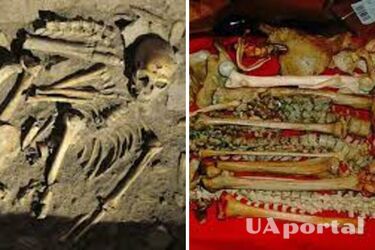Scientists have discovered what diseases killed thousands of people in the Neolithic era: they have survived to our time

In the harsh landscapes of ancient Scandinavia, as communities transitioned from nomadic to settled lifestyles, an unexpected enemy suddenly appeared on the horizon. It wasn't hostile tribes or harsh climates, but microscopic organisms that could cause deadly diseases. A new study by scientists has revealed this invisible life-and-death struggle to the world. Researchers studied the teeth of 38 people who lived in the Stone Age and extracted DNA to reveal the history of bacterial infections that once plagued these early communities, Yahoo!
The teeth, which have been remarkably well preserved for thousands of years, serve as time capsules, giving scientists insight into the health and lifestyles of populations of past eras. Their study spanned a wide temporal and cultural range, analyzing tooth samples from hunter-gatherers and early farmers from Norway and Sweden dating from 9,500 to 4,500 years ago. Careful examination revealed the presence of several pathogenic bacteria, including the oldest known specimen of Y. pestis, the plague pathogen, found in a woman from southern Sweden. Along with this ancient organism, the researchers found other dangerous bacteria, such as Y. enterocolitica, which causes a severe intestinal infection, as well as pathogens known today as foodborne pathogens and botulism.
The results of the study revealed a picture of the threats to health and life faced by early agricultural communities and revealed certain changes in the structure of diseases with the transition to a settled way of life. The presence of bacteria such as N. meningitidis and N. gonorrhoeae, which spread through close contact with humans, indicates the significant cultural and social changes that accompanied this transition. These diseases, which are easy to manage today, would have been a deadly threat in the days before modern medicine. These were the harsh realities of life in the Neolithic era that our ancestors overcame.
The research of scientists told in more detail about the ancient origin of the diseases that humanity still suffers from today, and showed how much changes in society have affected the adaptation of these bacteria to new conditions. When the inhabitants of ancient Scandinavia began to farm and live in close settlements, they unwittingly paved the way for the spread of infectious diseases and outbreaks. By studying the DNA hidden in their teeth, scientists are piecing together a picture of our ancestors' lives that may suggest ways to overcome serious health crises in the future.
If you want to get the latest news about the war and events in Ukraine, subscribe to our Telegram channel!
